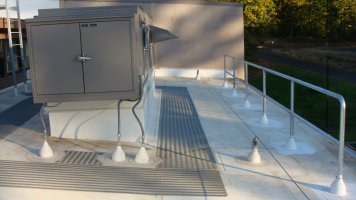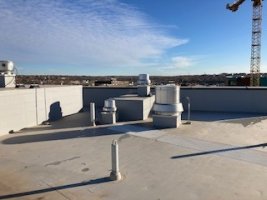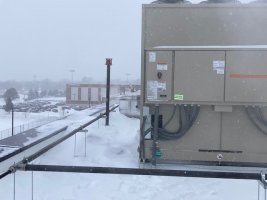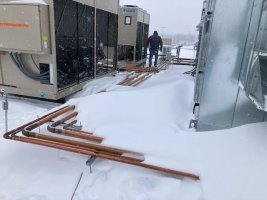klarenbeek
REGISTERED
Has anyone else questioned the exception to IMC 304.11 for the requirement of guard rails where mechanical equipment or roof hatches are within 10' of a roof edge?
"Exception: Guards are not required where fall arrest/restraint anchorage connector devices that comply with ANSI/ASSP Z359.1 are installed."
If you read the commentary on it, it makes no sense that the exception is even there:
"Restraint systems have limited application for flat roofs, where mechanical appliances and equipment are typically located, because of the impracticality of workers navigating around rooftop heating, ventilation, and air conditioning units while tethered to anchorage points."
Based on past experience in the industry, I fully agree with what the commentary says. The problem is that's the exact location the exception is allowing their use in place of a guardrail. "Here's an exception you can use even though its not practical to use..." I've been successful getting it amended out locally, but have been informed it will no longer get amended out going forward. It's not the HVAC contractor that chooses which system to use, but the architect, who will never have to actually rely on it. There's also NO direction as to placement of the anchorage points. Even the OSHA standard is no help there.
Thoughts?
"Exception: Guards are not required where fall arrest/restraint anchorage connector devices that comply with ANSI/ASSP Z359.1 are installed."
If you read the commentary on it, it makes no sense that the exception is even there:
"Restraint systems have limited application for flat roofs, where mechanical appliances and equipment are typically located, because of the impracticality of workers navigating around rooftop heating, ventilation, and air conditioning units while tethered to anchorage points."
Based on past experience in the industry, I fully agree with what the commentary says. The problem is that's the exact location the exception is allowing their use in place of a guardrail. "Here's an exception you can use even though its not practical to use..." I've been successful getting it amended out locally, but have been informed it will no longer get amended out going forward. It's not the HVAC contractor that chooses which system to use, but the architect, who will never have to actually rely on it. There's also NO direction as to placement of the anchorage points. Even the OSHA standard is no help there.
Thoughts?








